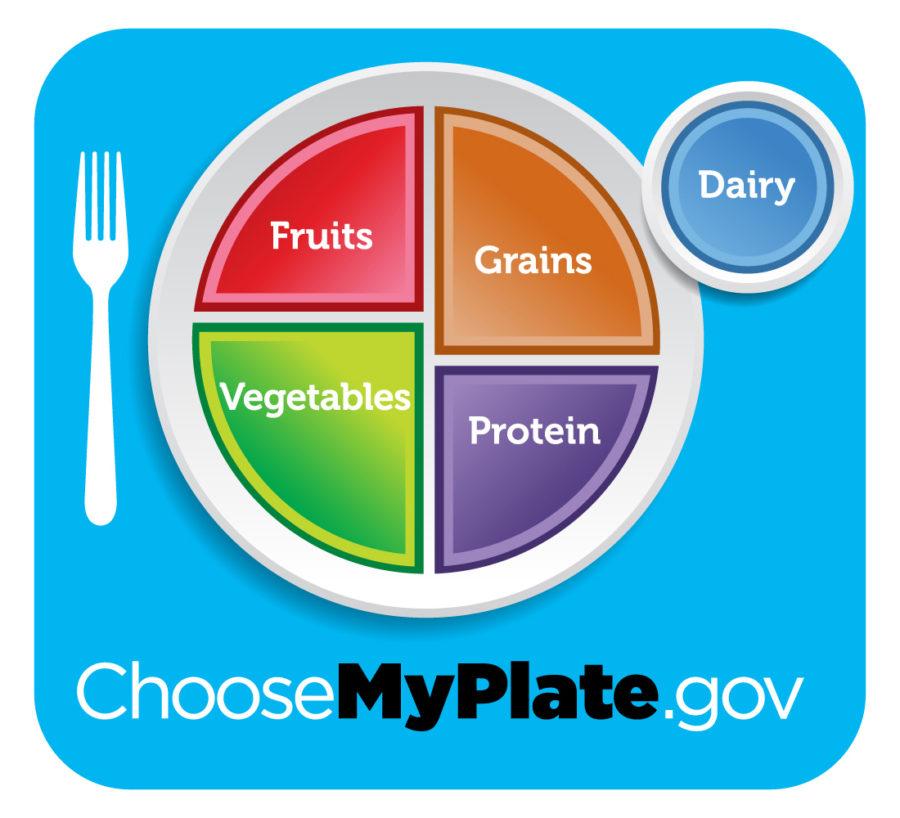National nutrition month celebrates culture tastes
Photo Courtesy/ChooseMyPlate.gov
Choosemyplate.gov shows a guide to fill your plate with a majority of grains and vegetables for a healthy eating style. Powered by the USDA, the website has meal plans as well as a “my plate on campus” page for students.
March 26, 2013
March marks the 49th anniversary of National Nutrition Month established by the Academy of Nutrition and Dietetic.
This year’s theme, “Eat Right, Your Way, Every Day” encourages the influence of culture, ethnicity, lifestyle and food preferences on healthy personal eating styles.
Giovanna Rajao, junior from Rio de Janeiro, Brazil, studying journalism and mass communication, found American cuisine at ISU dining centers to be overwhelming due to the amount of unhealthy choices and processed food.
“My meals were always homemade,” Rajao says. “My family and I rarely went out to eat, if not for a special occasion. I avoid eating out as much as possible because I know for the most part whatever I cook will be healthier than whatever I eat when I’m out.”
While most Americans choose fast foods for their on-the-go lifestyle, Rajao takes pride in the fact that Brazilians eat differently.
“Drive-thrus and eating out constantly isn’t a big part of the Brazilian culture, which I think is a good thing. Our meals are entirely home-based, and burgers and pizza aren’t as popular,” Rajao says.
Although fast food and eating out are part of the American culture, cooking at home with nutritious foods may be an important step toward a healthier lifestyle and lowering obesity and chronic disease rates in the United States.
All individuals have unique tastes, and the Academy of Nutrition and Dietetic encourages Americans to personalize their own eating style.
It can be challenging to change eating habits and make the transition from unhealthy to healthy eating.
“Do one small change at a time, such as subbing whole grains for refined grains, adding vegetables to meals and snacks or switching to low-fat dairy,” said Sally Barclay, clinician and registered dietitian. “Build a healthful eating plan one small change at a time, and you will see big results over time.”
Instead of giving up your favorite not-so-healthy foods, eat them in moderation and incorporate them into a balanced diet.
“We need to feel full, but also satisfied, which comes from including foods we enjoy in our eating in reasonable amounts,” Barclay says. “You need to learn to listen to your internal cues of hunger and fullness and not to use food as comfort or reward to deal with your emotions or stress.”
Barclay also says to savor each bite in order to become satisfied easier and be less likely to over eat.
During National Nutrition Month try to mix up your meal routine by finding a new international recipe that appeals to your tastes.
“White rice and black beans are one of the most traditional aspects of Brazilian cuisine,” Rajão says.
Follow the MyPlate guidelines by making at least half of your grains whole, include low-fat or fat-free dairy items, consume around 3 ounces of protein from sources such as lean cuts of meat, fish or legumes, and fill half of your plate with a variety of colorful fruits and vegetables.







